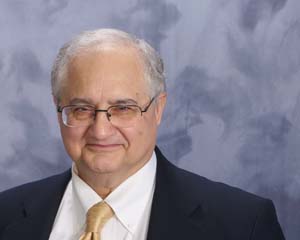Introduction to Distance Education: Theorists and Theories –Reflections on Theories
By: Dr. Farhad (Fred) Saba
Founder, Distance-Educator.com
Industrialization of education is particularly desirable when the need of many students for access is at stake. Daniel (1996) emphasizing the failure of “campus” education to meet such a need, particularly in developing countries, contrasted the operation of “mega-universities,” or those catering to the needs of at least 100,000 students, with that of “campus” universities. He said:
“The mega-universities differ from campus universities in their production processes. The operations of the mega-universities owe much to industrial methods. Whereas academic processes on campus are akin to a cottage industry.” (P. 45).
It is important to note here that Daniel’s notion of a “cottage industry” is different than that of Toffler, who envisaged a “cottage industry” as a “third wave phenomenon.” Daniel’s reference to a “cottage industry” here is a pre-industrial operation with faculty who work alone and perform their tasks without the benefit of a supporting staff affording them the advantages of industrial division of labor.
Introduction of the Internet with its potential for a post-industrial form of education has led to a critique of industrialization. Daniel (1996) referring to the shortcomings of the pre- industrial, and industrial operations, said “It is likely that neither approach will be particularly well suited to the third generation of distance education technologies: the knowledge media.”
Garrison, and Anderson (1999) made a distinction between Daniel’s (1998) conceptualization of the role of the mega-university, in serving a mass of students with that of the research university. Drawing from Schramm’s (1977) distinction between “big media,” and “little” media, Garrison, and Anderson argued, while mega-universities might rely on big media to engage in responding to a mass audience, research universities might rely on little media to offer a seemingly post-industrial form of education or “little distance education” (LDE). They posited LDE to have the following characteristics:
- Maximizes interaction
- Focuses on meaningful learning outcomes
- Maximizes active learning
- Provides flexible design
- Supports a systems view in its administrative affairs
- Sustains a distributed architecture
- Upholds research in practice, and
- Offers cost effective education
Daniel (1998) was cognizant of this dynamic vision of teaching and learning when he said: “The coming together of telecommunications, television and computing is producing a media environment for distance education that is more than the sum of its component elements.” Referring to this new media environment as “knowledge media” He, said: “It denotes the convergence of the learning and cognitive sciences with computing and telecommunications technology” to create a new environment in which “the conventional, rather static, notion of ‘content’ will become less important than the dynamic means of accessing, sharing and creating knowledge now available. By providing a medium for conversation, a delivery mechanism and a means of circulating digital objects, the knowledge media honour both the community and conventional paradigms that are central to the idea of a university.”
Providing affordable education to all eligible learners while catering to their individual needs for learning and personal requirement for interaction with the instructor is the core issue in developing and implementing a post-industrial distance education system. The tension between the necessity of a second wave industrial system of mass education and a third wave system where individual needs are addressed is a classic Tofflerian conflict.
REFERENCES
Daniel, S. J. (1998). Mega-universities and knowledge media: Technology strategies for higher education. London, UK: Kogan Page.
Garrison, R. D., & Anderson, T. D. (1999). Avoiding the industrialization of research universities: Big and little distance education. The American Journal of Distance Education. (13), 2, 48-63.
Keegan, D. (Ed.). (1994). Otto Peters on distance education: The industrialization of teaching and learning. London, UK: Routledge.
Dynamic Systems Theory of Distance Education
Farhad Saba, Ph. D.
Founder and Editor, Distance-Educator.com
In this series of articles, I presented a hierarchical model of distance education consisting of seven interrelated nested systems levels. These systems have been present in most distance education organizations that I observed, or planned and built over the past 30 years. In the previous weeks, I discussed Hardware, Software, Telecommunications, Instructional, Educational, Societal and Global Systems Levels. I started to explain the process of system modeling so that you could start the planning process for your organization. I hope that conducting the environmental scan as presented in a previous article has given you a better appreciation of the components of the technology-based educational programs in your organization and the interrelationships among such components. But before I went any further on the process of modeling itself, I explained certain important concepts in system methodology in this article and showed how these principles can be applied in this article titled Planning and Managing Distance Education Systems: Applying system dynamics. In a subsequent article, I presented a step-by-step application of system dynamics for model building and described how these steps can be implemented in your institution. Also in an article titled Institutional Realities, I explained the inverse relationship between complexity and the process of planning. In more complex institutions, it is difficult to agree on a set of common goals among students, faculty, administrators, taxpayers, and decision makers. To make such agreements more feasible, I also described the roles of the members of the team that is responsible for the modeling modeling process. In the article to follow starting this week, we will focus on Instructional Systems Level and describe how system modeling at this level impacts the process of planning for the entire institution as instruction is a core function of institutions of higher education as they are structured now.








